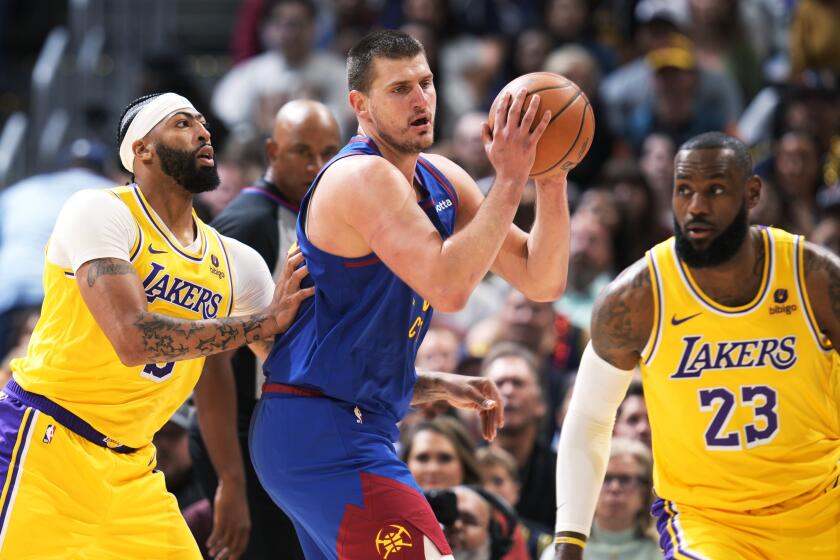Column: Sky’s the limit for TV shots during Packers-Cowboys game
Green Bay at Dallas is a sure bet, ratings-wise. But for Fox, that showcase NFL game Sunday is a high-wire act.
Get ready for some different camera angles, because for the first time in the regular season, the network will use two SkyCams, with one positioned just behind the quarterback, as usual, and a second peering down from about 50 feet.
That double coverage will allow for all the traditional shots as the low camera zips along behind the play, and the high one gives a God’s-eye view of the action.
It used to be that the Madden game went the extra mile to look like real football. Now, real football looks like Madden.
“The upper SkyCam is almost like the dream of having a drone cover a football game,” said Michael Davies, senior vice president of field operations at Fox. “You can see plays unfold in ways you hadn’t before, at least from that perspective.”
Fox tested the system in an exhibition game this summer, as did NBC, which will use two SkyCams for the Super Bowl rematch in two weeks when New England plays host to Atlanta on Sunday night. NBC also plans to double up for its Super Bowl game coverage in February.
The cameras are suspended on wires that run the length of the field and are required by the NFL to stay behind the offense before the snap. Each camera is operated by a two-person team. One is the pilot who controls where the SkyCam is positioned and how high it is above the field, and the other is the camera operator who controls the pan, zoom and direction of the lens.
“The one thing that a lot of people don’t understand is that these cameras are being controlled by people with joysticks,” said Fred Gaudelli, executive producer of NBC’s “Sunday Night Football.” “It’s no different than a video game. These guys who run them are really skilled. I bet you there’d be a lot of 15-year-olds out there who would be really skilled at it too, because they’re used to doing those kinds of things.”
For the game at AT&T Stadium, there’s the added challenge of the giant video board, so the two SkyCams have to run under that and not conflict with each other. There will also be five super slow-motion cameras for that game, as well as pylon cameras in the end zones.
Davies said the traditional SkyCam probably gets more use in Fox broadcasts than any other camera. The network is going to be careful about not overusing the new vantage point.
“We don’t want to go away from what we do week in and week out,” said Rich Russo, Fox’s lead game director. “We’re not all of a sudden going to say, ‘Hey, we’ve got this new camera. Let’s just use it all the time.’ I think it’s got to be sprinkled in, and it’s got to mean something.”
There’s some debate over who should get the credit for the creation of the camera-on-cables concept, with some people pointing to the late Jim Rodnunsky, and others to prolific inventor Garrett Brown, who came up with the concept of the Steadicam. There’s no question that both are industry pioneers.
Rodnunsky, who died in 2011, was a filmmaker from Granada Hills who created his version while working to make his skiing simulator more realistic. He took some frightening risks to get the first overhead shots with his Cablecam prototype. He created a version of that camera in 1989 when he strung 1,400 feet of steel cable above Sudan Couloir at Blackcomb Mountain in Canada, among North America’s most harrowing ski runs.
He constructed an aluminum basket and would zip face-down and feet-first down the cable — attached to rocks at the top and bottom – reaching speeds of 50 mph and a height of 80 feet, using motorcycle brakes to slow his descent. Of course, he couldn’t get a good look at where he was heading because he was peering through a camera lens.
The system has come a long way since then.
“I think Jim would be proud,” Davies said of the two-SkyCam arrangement. “I think he’d be amazed with what we’ve done with it. Either that, or he probably thought about it 20 years ago.”
Follow Sam Farmer on Twitter @LATimesfarmer
More to Read
Get our high school sports newsletter
Prep Rally is devoted to the SoCal high school sports experience, bringing you scores, stories and a behind-the-scenes look at what makes prep sports so popular.
You may occasionally receive promotional content from the Los Angeles Times.







